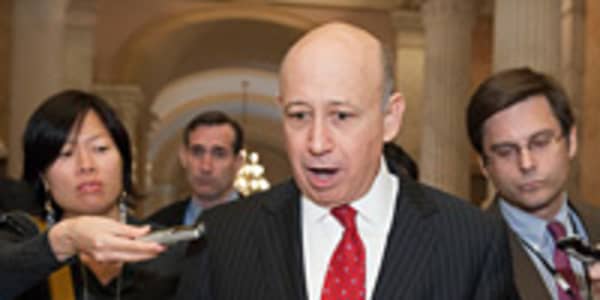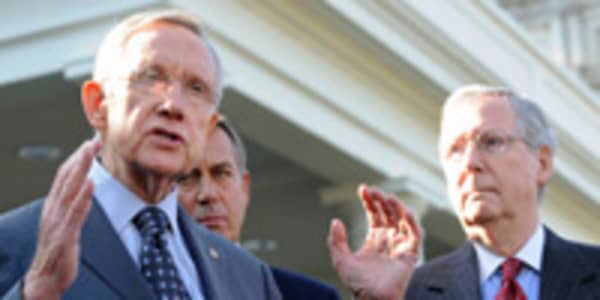With the release this week of a secretly recorded tape of his comments at a May 17 fundraiser, Mitt Romney became the latest politician to be reminded that cameras are everywhere on the campaign trail.
While acknowledging that his off-the-cuff remarks were “inelegant,” Romney has not backed away from his comments about the 47 percent of Americans who pay no federal income taxes. (Read More: Could This Man Cost Romney the White House?)
Responding to a question about how to persuade voters to “take care of yourself” rather than rely on government, Romney responded that it is not his job to worry about winning the votes of the 47 percent.
“I’ll never convince them that they should take personal responsibility and care for their lives,” Romney said.
Various fact-checkers have found that while the 47 percent figure in terms of people who pay no federal income tax is roughly accurate, it includes active duty military personnel, senior citizens and the working poor.
So our Investigations Inc. team looked at the rest of the one hour, seven minute video, and found other instances where Romney’s facts do not always add up.
(Read More: Don't Judge Romney by Unfortunate Video.)
Romney says, as he often does on the campaign trail, that he favors unparalleled military strength, in contrast to President Barack Obama.
“Our Navy's smaller in number of ships than anytime since 1917. And this president wants to shrink it. The list goes on. Our Air Force is older and smaller than anytime since '47 when the Air Force was formed. And he wants to shrink it. If we , which is spending 1 percent to 2 percent of their economy on the military, we will not be able to have freedom in the world.”
A statement like that is like an engraved invitation for fact checkers, so far be it from us to turn it down.
Romney is correct that the European Union spends 1 percent to 2 percent of its economy on defense — 1.61 percent to be exact, according to 2010 figures from the European Defense Agency.
The U.S., by contrast, spends just under 5 percent of GDP on defense, and even if the cuts proposed by Obama and the automatic cuts scheduled to begin in January if Congress and the White House cannot reach a budget deal were to go into effect, U.S. defense spending would still remain well above Europe’s.
As for the size of the Navy and Air Force, Romney’s figures are not exactly right.
The U.S. Navy History and Heritage Command says the Navy does have fewer ships now than it did at the height of World War I — 286 today versus 342 in 1917.
But the Navy had even fewer ships before Obama took office, falling to 278 ships in 2007 — the smallest number since the 19th century. In fact, the number of active ships grew in the first year of the Obama presidency for the first time in four years.
As for the Air Force, the number of active duty personnel is higher now than when the Air Force was founded in 1947. The Air Force Personnel Centerreports 329,293 active duty personnel as of June 30, compared with 305,827 in 1947 according to the Air Force Association. But the number of aircraft has fallen considerably, with 5,484 aircraft in service today according to the Air Force Association compared with 25,088 in 1947. And the average of age of active duty aircraft is 20.4 years today, which is almost certainly much older than the fleet at the end of World War II.
Speaking at an Air Force Association seminar last October, Air Force Secretary Michael Donley warned about the potential automatic cuts on top of the cuts already proposed in the Obama administration’s budget.
“We are the smallest Air Force since 1947,” Donley said. “Our sense is, there’s not much waste to be found there.”
Still, the comparisons between today and 1947 — or 1917 — are somewhat simplistic since they do not account for changes in technology or warfare.
Romney’s comments about defense spending drew scant attention compared to his comments about Americans who do not pay income tax. Those comments are still rippling across the campaign landscape and leading to more crosscurrents with the facts.
The pro-Obama Super PAC Priorities USA Action quickly put out a new ad that repeats some old factual stretches.
“Romney will make things even tougher (for the middle class),” the ad says, “raising taxes by up to $2,000 to give multimillionaires a $250,000 tax break.”
Romney has promised to cut marginal tax rates by 20 percent.
In fact, Romney has promised to cut marginal tax rates by 20 percent across the board.
The charge about a $2,000 tax increase for the middle class comes from an analysis by the nonpartisan Tax Policy Center that says if Romney also keeps his promise to make his tax cuts revenue neutral, it would require “deep reductions in many popular tax benefits ranging from the mortgage interest deduction, the exclusion for employer-provided health insurance, the deduction for charitable contributions, and benefits for low and middle-income families and children like the Earned Income Tax Credit and the child tax credit.”
Following that analysis, the TPC said, the average family making less than $200,000 a year with children would see a $2,000 tax increase (a family with the same income and no children would see a modest tax cut).
The ad’s claim that Romney would use the supposed $2,000 tax increase on the middle class to fund a $250,000 tax cut for multimillionaires is even more dubious. The figure comes from a different TPC analysis that considers the Romney plan without the so-called “base broadeners” that would make it revenue neutral.
Under that analysis, a family making $200,000 would also receive a tax cut, but at around $4,000 it would be much smaller in percentage terms than the millionaires’ cut. Regardless, Priorities USA Action appears to be cherry-picking its numbers from two different analyses, to create a scenario that bears little resemblance to what Romney has proposed.
The Romney campaign, meanwhile, struck back at the furor of the secret fundraiser video by unearthing a tape of its own. It includes audio of then-Illinois State Senator Barack Obama in 1998 appearing to endorse redistribution of wealth — a concept that is anathema to conservatives. Romney seized on the tape during an interview with Fox News.
“We have two very different views about America. The president’s view is one of a larger government,” Romney said. “There’s a tape just came out today with the president saying he likes redistribution. I disagree.”
(Read More: Have Romney's Closet Advisers Failed Him? - Kudlow.)
Obama’s comments came during a 1998 conference at Loyola University of Chicago entitled “Conference on Chicago Research & Public Policy; linking Chicago Globally & Locally.”
In the discussion, which has been confirmed by the Obama campaign, he bemoans examples of poor public policymaking that feed what he calls “a propaganda campaign against the possibility of government action and its efficacy.” (Read More: Wall Street Hopes for Romney, but Expects Obama to Win.)
Obama calls for a restruction of government systems to “facilitate some redistribution because I actually believe in redistribution, at least at a certain level to make sure that everybody's got a shot.”
It is not the first time he has been accused of favoring redistribution of wealth, which was also a Republican campaign theme in 2008.
But if Obama did come into office favoring redistribution of wealth, he did not succeed, at least in his first term.
According to the Congressional Research Service, the share of wealth held by the top 10 percent grew to 74.5 percent in 2010, from 71.5 percent in 2007.
—By CNBC's Scott Cohn
@ScottCohnCNBC





